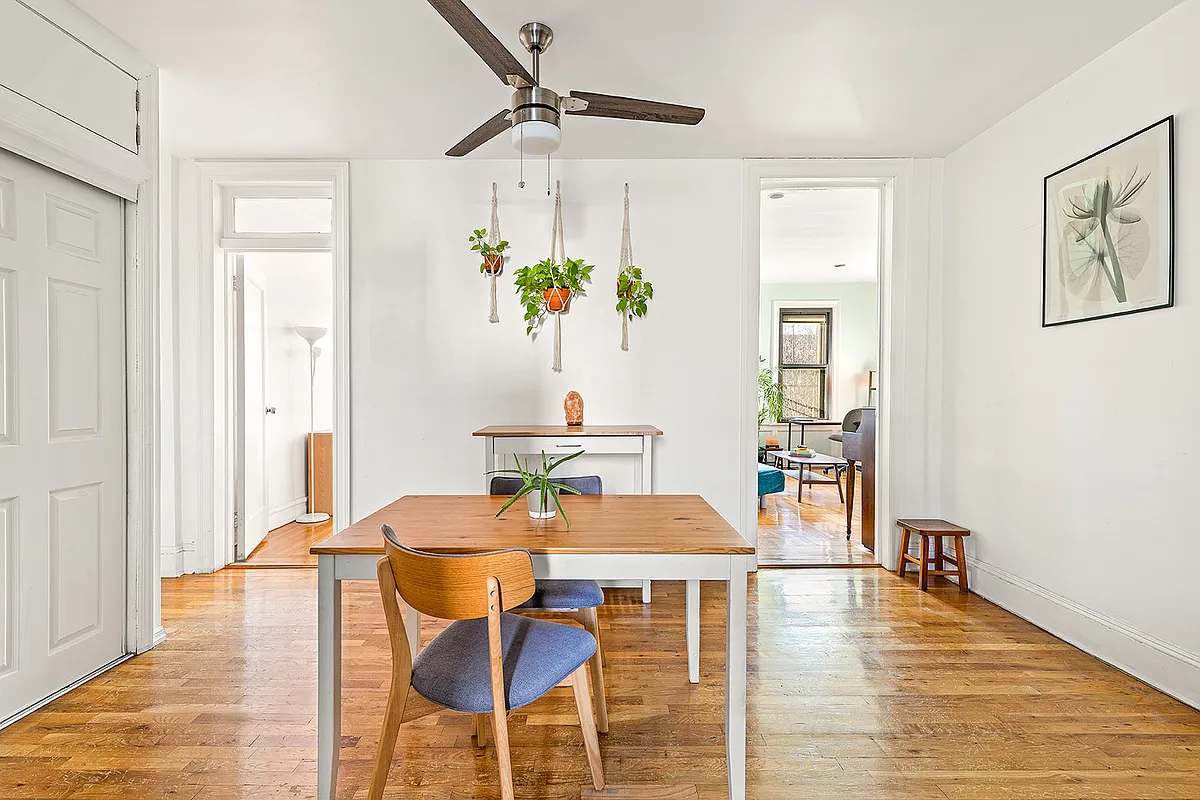Three Brooklyn Buildings Calendared This Week
The Landmarks Preservation Commission went through a very full agenda Tuesday, voting to calendar three historic Brooklyn sites. The first is the Henry and Susan McDonald House at 128 Clinton Avenue, in Clinton Hill (pictured left). Landmarks says that it’s an “unusually well-preserved and rare free-standing Italianate frame house with Greek Revival style elements” built in…


The Landmarks Preservation Commission went through a very full agenda Tuesday, voting to calendar three historic Brooklyn sites. The first is the Henry and Susan McDonald House at 128 Clinton Avenue, in Clinton Hill (pictured left). Landmarks says that it’s an “unusually well-preserved and rare free-standing Italianate frame house with Greek Revival style elements” built in 1853-54. It was built for Henry McDonald, a prosperous baker with a business in Manhattan. The second is the Long Island Business College at 143 South 8th Street, in South Williamsburg (pictured right). It’s currently a co-op building, formerly a business college. The Romanesque Revival-style building was constructed in 1890-92 with red brick, brownstone details, and a slate roof. The third is the Peter Huberty House at 1019 Bushwick Avenue (pictured center), a Building of the Day pick. The Colonial Revival mansion was built in 1900. LPC details the facade: “The Huberty House design is cubic in form and is crowned by a hipped roof with dormers. Laid in a Flemish bond, its red brick facades are accented with glazed brick headers, gray brick corner quoins, and stone and terra-cotta window trim. Its main entrance features an impressive Federal-style curved portico with Ionic columns, arched gray brick Gibbs surround, historic double-leaf doors, and stained-glass fanlight.” You can read the full writeup of all three historic structures after the jump. And regarding the vote of a clapboard restoration at 122 Pacific Street, the LPC approved.
Henry and Susan McDonald House
128 Clinton Avenue (aka 128-132 Clinton Avenue & 128 Rear Clinton Avenue), Brooklyn
Block 1887/ Lot 82
Built: 1853-54
Architect: Not Determined
Original Owner: Henry McDonald
Style: Italianate with Greek Revival elements
Previous Actions: Within Wallabout National Register Historic District
Significant Alterations: Original conservatory replaced by Historic rear addition; porch railing replaced; front stoop and railings replaced, some moldings and brackets replaced, single pane pivot windows replace original attic casements, fire escape installed on facade
This unusually well-preserved and rare free-standing Italianate frame house with Greek Revival style elements was erected for Henry and Susan McDonald in 1853-54. It was built in a period when this area of the Wallabout was undergoing rapid development following an expansion of the Brooklyn Navy Yard and the opening of several new streets. Located at the crest of a hill with excellent views of the East River and Manhattan, Clinton Avenue was the neighborhood’s premiere residential street, a wide tree-lined boulevard lined with the villas of wealthy merchants. The house’s cubic form, low hipped roof, strongly projected bracketed eaves, molded window surrounds, wood-and-glass double doors with segmental arched transom and wood reveal, and columned portico enriched with dentils and paired brackets are characteristic of the Italianate style. Greek Revival style elements include the fluted porch columns with Ionic capitals, tall first story windows with eared surrounds, and flush horizontal wood siding on the first story facade.
The house was occupied by Henry McDonald, a prosperous baker with a business on Catherine Street in Manhattan and his family until the mid-1870s. Subsequent owners included commodities broker-banker David S. Jones, attorney, later judge Edgar J. Phillips, and physician Domenick Candella. Although there have been changes to the house’s front porch and stoop rails, some replacement of historic moldings, pivoting sashes installed in place of the original attic casements, and a fire escape added to the façade the McDonald House remains unusually intact and survives today as an important reminder of the early development of Wallabout.
Long Island Business College
143 South 8th Street, Brooklyn
Block 2132/ Lot 30
Built: c. 1890-92
Architect: Possibly James W. Naughton
Original Owner: Henry C. Wright, Long Island Business School
Style: Romanesque Revival
Previous Actions: None
Significant Alterations: Windows replaced, first story window grilles
This imposing Romanesque Revival style building was built as the Long Island Business School by Henry C. Wright in 1890-92 and may have been designed by noted school architect James C. Naughton. The building is constructed of red brick with brownstone details and a slate roof. The business college was founded in 1873 as Wright’s Business College at Broadway and Bedford Avenue. It changed its name to the Long Island Business College when it moved into its new home at South 8th Street near Driggs Avenue in Williamsburg in 1892. Wright (1843-1909), founder and principal of the school, was a prominent resident of Williamsburg. The school, which started with 12 students in 1873, had 700 male and female students by 1899. The design of the building is reminiscent of the work of Naughton who was Superintendent of Buildings for the City of Brooklyn Board of Education from 1879 until his death in 1898. Among his known designs are Girls’ High School (1885-86), Boys’ High School (1891-92) and Public School 9 Annex (1895), all designated New York City Landmarks. The building features a rusticated brownstone base, round-arched entrance door surround, round-arched windows at the upper floors, brownstone banding, rough-faced brownstone quoins, slightly projecting towers with flat roofs at the center and outer bays and slate-covered pitched roofs in between with dormers having arched triple windows. The school building was purchased by the NYC Board of Education in 1921 from Wright’s estate. It became residential in 1986.
Peter P. Huberty House
1019 Bushwick Avenue, Brooklyn
Block 3322/ Lot 38
Built: 1900
Architect: Ulrich J. Huberty; additions Helmle & Huberty (1909), Boris W. Dorfman (1920), L.M. Kaufman (1926), Horn & Ligeti (1928)
Original Owner: Peter P. Huberty
Style: Colonial Revival
Previous Actions: None
Significant Alterations: Slate roof replaced with asphalt shingles; security grilles over some side-façade window openings; loss of some cornice dentils; rooftop television antenna
Constructed in 1900 in the Colonial Revival style, the Peter P. Huberty House is a remarkably well-preserved reminder of the days when Bushwick Avenue was one of Brooklyn’s most prestigious residential streets. Peter P. Huberty was a German-born lawyer and politician who served as the Kings County Clerk at the turn of the 20th century. This house was designed by his 23-year-old son, Ulrich J. Huberty, who would later partner with Frank J. Helmle to design several prominent Brooklyn landmarks. Huberty’s architectural career was tragically short, as he succumbed to typhoid fever in 1910 at the age of 33.
The Huberty House design is cubic in form and is crowned by a hipped roof with dormers. Laid in a Flemish bond, its red brick facades are accented with glazed brick headers, gray brick corner quoins, and stone and terra-cotta window trim. Its main entrance features an impressive Federal-style curved portico with Ionic columns, arched gray brick Gibbs surround, historic double-leaf doors, and stained-glass fanlight. Other notable features include the pilastered, three-sided bay windows with Greek-key friezes, ornate ironwork, strongly projecting cornice enriched with dentils and console brackets, and the Palladian window with Gothic tracery on the front dormer.
By 1909, the house had a new owner, builder Jacob Blank, who commissioned, Helmle & Huberty to construct a single-story rear extension. Subsequent additions were made in the 1920s for Dr. Henry Lerner, including a small western entrance porch, which features a multipane door with sidelights and stained-glass fanlight. All of these additions harmonized effectively and sympathetically with Huberty’s original design. More recent alterations include the replacement of the house’s original slate roof with asphalt shingles, the installation of security grilles over some side-façade window openings, some unsympathetic brick repointing, and the loss of some cornice dentils. Nevertheless, the house remains remarkably intact. It is a fine example of the Colonial Revival style, a significant early work by an important Brooklyn architect, and a reminder of the period when this section of Bushwick was lined with the free-standing houses of prosperous German-American owners.
Information and photographs by the Landmarks Preservation Commission





What's Your Take? Leave a Comment